Glaubicz is a Polish coat of arms.
Glaubicz is a Polish coat of arms.
Godziemba is a Polish coat of arms. A rare medieval Polish knightly coat of arms used by Polish and Austrian noble family Głownia.
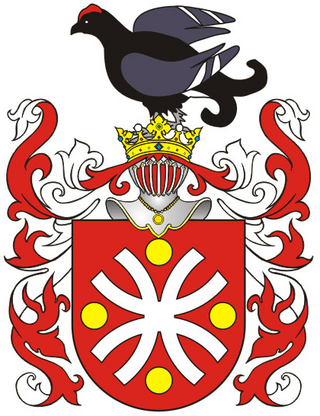
Gierałt is a Polish coat of arms. It was used by several szlachta families in the times of the Polish–Lithuanian Commonwealth.

Polish heraldry is the study of the coats of arms that have historically been used in Poland and the Polish–Lithuanian Commonwealth. It treats of specifically Polish heraldic traits and of the Polish heraldic system, contrasted with heraldic systems used elsewhere, notably in Western Europe. Due to the distinctive ways in which feudal societies evolved, Poland's heraldic traditions differ substantially from those of the modern-day German lands and France.

Bończa is a Polish coat of arms.

Leszczyc, herb szlachecki is a Polish coat of arms. It was used by several szlachta families in the times of the Polish–Lithuanian Commonwealth.

Bożawola is a Polish coat of arms. It was used by several szlachta families.

Cholewa is a Polish coat of arms. It was used by several szlachta families in the times of the Polish–Lithuanian Commonwealth.

Bajbuza is a Polish coat of arms. It was used by several szlachta families in the times of the Polish–Lithuanian Commonwealth.

Drużyna is a Polish coat of arms. It was used by several szlachta families in the times of the Kingdom of Poland and the Polish–Lithuanian Commonwealth.

Gozdawa is a Polish nobility Coat of Arms. It was used by several szlachta families in the times of the Kingdom of Poland and the Polish–Lithuanian Commonwealth.

Jeż is a Polish coat of arms.
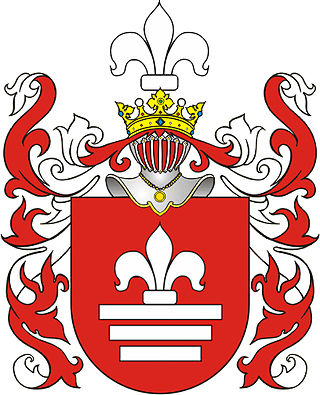
Roch III is a Polish coat of arms. It was used by several szlachta families in the times of the Polish–Lithuanian Commonwealth.
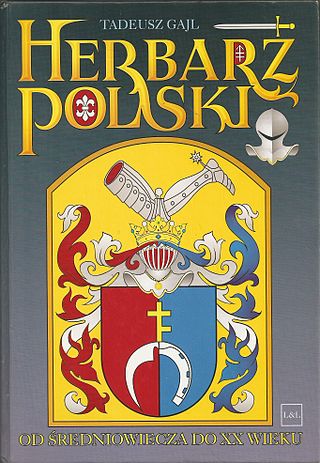
Tadeusz Gajl is a Lithuanian-born Polish artist and graphic designer, notable for his contemporary illustrations on the coats of arms borne by the historical nobility (szlachta) of Poland.

Dąbrowski is a Polish coat of arms. It was used by several szlachta families.

Pogonia is a Lithuanian and Polish coat of arms. It was used by several szlachta families in the times of the medieval Poland and the Polish–Lithuanian Commonwealth.
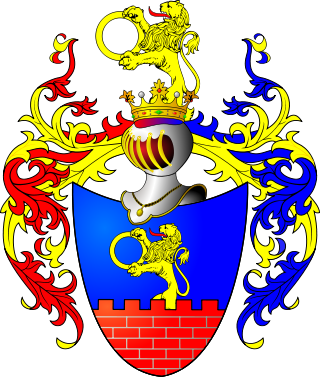
Prawdzic (Prawdzik) was historically a Polish coat of arms. It was used by the nobility clans and later szlachta families in the times of the Kingdom of Poland (1385–1569) and Polish–Lithuanian Commonwealth.
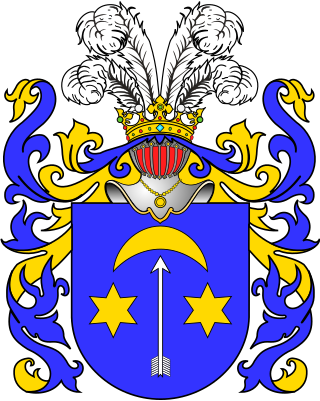
Garczyński is a Polish coat of arms. It was used by several szlachta families in the times of the Polish–Lithuanian Commonwealth.

Kur II is a Polish coat of arms. It was used by several szlachta families in the times of the Polish–Lithuanian Commonwealth.

A heraldic clan, in Poland, comprised all the noble (szlachta) bearers of the same coat of arms. The members of a heraldic clan were not necessarily linked by consanguinity. The concept was unique to Polish heraldry.

Mohyła is a Polish coat of arms. It was used by the Movilești family in the times of the Polish–Lithuanian Commonwealth.